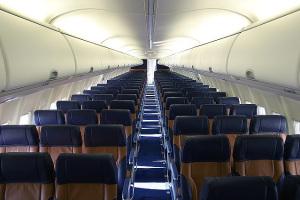 Phobias in general are not fun to deal with, especially if the phobia involves your daily life in some way. For example if you work in a building where you have to take the elevator, but fear elevators; or have to take the subway to work and fear of the subway. But for some reason, the treatments that tend to work for phobias on the ground don’t tend to work as well for fear of flying.
Phobias in general are not fun to deal with, especially if the phobia involves your daily life in some way. For example if you work in a building where you have to take the elevator, but fear elevators; or have to take the subway to work and fear of the subway. But for some reason, the treatments that tend to work for phobias on the ground don’t tend to work as well for fear of flying.
Fear of flying is a complicated phobia. There are a few reasons this phobia is often much more difficult to resolve than other phobias. First, there’s the whole being miles high in the sky thing, which, no matter how safe it might be, is nearly impossible for many people to wrap their heads around how it could possibly be safe.
Also, flying is something that people tend to do only once in a while, unless their jobs require frequent travel. Because of this, there’s less opportunity to overcome the fear, and it remains dissociated in the brain as something not normal to daily life, regardless of how routine flying actually is.
The combination of these two areas makes fear of flying difficult to treat with most conventional methods of treatment phobias. This is because, even if you resolve one of those components above, the others often still exists. This means that some people can fly on a daily basis, making it very “normal” to the brain, yet if they don’t understand how flying works, they may still experience significant anxiety and fear because they think they just get lucky every day when they make it alive.
I used to have my own fear of flying. A pretty bad case of it at one point. Using my education and experience as a psychotherapist, and my knowledge of aviation, as somewhat of an enthusiast, I created a program based on the principles that if a person is going to overcome a fear of flying, it has to be both normalized by the brain, and the person has to know what’s going on, from a passenger point of view (sounds, sensations, a bit about how flying works, etc.). They have to have answers to their questions, not just fly a lot or go through desensitization.
Of course, it’s not completely as simple as that, but those are the two primary principles of the program I run. It is still necessary to learn how to regulate our emotions and our minds (and active imaginations that take over when feeling fearful). The problem is that many therapists approach fear of flying primarily in this area and don’t include the top two areas in any way. This is the mistake many approaches make. Regulation is important and helpful as part of the process, but it doesn’t resolve the issue on its own.
The last element is the underlying. What’s happening that creates the fear of flying for you? Why is it possible to be confident in other areas of life, yet be so fearful of flying? A fear of flying often encompasses a range of other phobias within it. For example: fear of heights, fear of falling, claustrophobia, loss of control, fear of embarrassment, fear of illness, etc. This just adds to what is already a complex phobia. The underlying elements are different for each person, and uncovering this is also important in resolving this fear.
All of this is what makes fear of flying such a unique phobia to treat. It requires a multifaceted approach, otherwise it comes up short. The four prongs to this program I described above (normalization, passenger flying education, emotional/cognitive regulation, underlying psychological elements) are weaved together through various kinds of exercises to treat this fear.
The program is also created in a way that it’s flexible to be tailored to each person’s needs (for example, some people fear takeoff the most, and we may spend more time on this area, or certain underlying elements surface and we work more here for a time. Or spend less time in areas that aren’t problematic. Etc.). It’s very easy, and not an overly heady process. All that’s needed to do this program is a fear of flying, a willingness and interest to do some worksheets and exercises, and a curiosity to learn and talk about yourself.
Contact me if you are interested to learn more. This program has proven to be equally as effective via Skype, so it is open to those outside of NYC as well.

